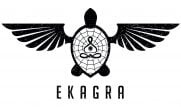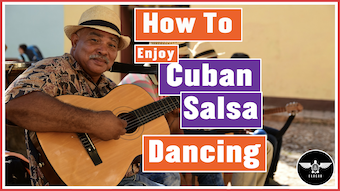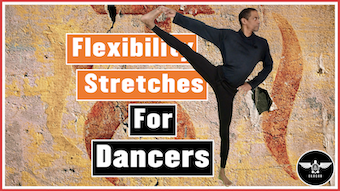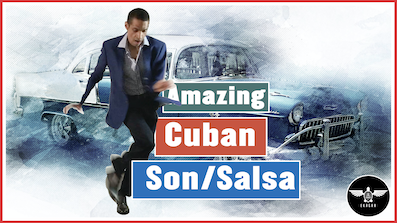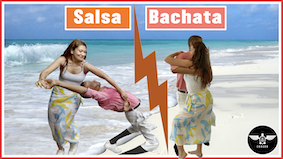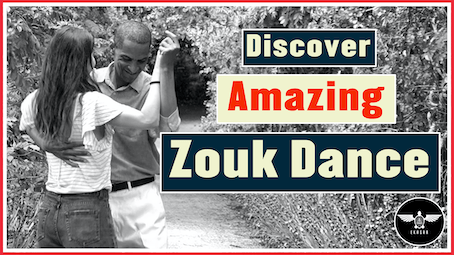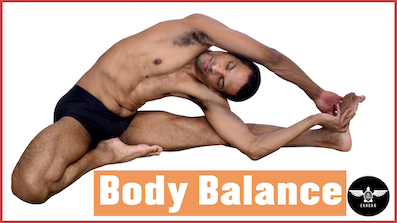
Cuban salsa dancing is not only a great way to have fun, but it’s also a great way to socialize, lose weight and see life from a different angle.
I will explain further why this dance has within itself all of the sunshine one associates with Cuba and the Cuban people.
What makes Cuban salsa dancing different?
Cuban salsa dancing traces its origins to a multitude of dance forms. First, the Afro-Cuban roots are strongly displayed through the use of drums, clave, etc. Another feature of this dance is also a link to Spanish tradition. An attentive spectator can decipher at least five different types of dances displayed when someone dances Cuban salsa. On the one hand, you might recognize the very traditional Abakua, the movements of Rumba, and the specific gestures of Son, Chachacha, Cuban mambo, or Chango.
On the other hand, many Cuban songs also include varieties of “themes” which can confuse beginners. There is also a strong emphasis on the 4th and 8th beat, which implies that the dancer is manipulating the music. Moreover, movements of the hips and shoulders significantly contribute to this manipulation.
Examples of Cuban salsa songs with Rumba
La bendicion
Examples of Cuban salsa songs with Rumba & Chango
Vive La Vida
Enthusiasm – God from within
That’s what you get with Cuban salsa dancing. Your body and the whole system can witness substantial positive changes in minutes when you practice Cuban salsa.
Because I practiced every day for many hours, I got a chance to observe what was going on with my body, mind, and soul. In a matter of seconds, I would go from a phase where worries and difficulties would have crippled my mind for a whole morning to where everything was forgotten, and I could see all seven dying. Then, for 2/3 hours, I would enter another universe, like being on an auto-pilot plane at a high altitude.
That’s how powerful Cuban salsa is. The very first aspect that gets affected by the practice is, of course, your body.
La revolucion del cuerpo
Have you ever played with a malleable material? The more you shape it, the more it offers endless shapeable opportunities. Cuban salsa dancing is a bit like plasticine. Because of its route in afro-Cuban dance, you can get many forms by using your body to the maximum. In many Cuban salsa dancing schools, the first part of the student training is sessions about body movement. Unfortunately, this part tends to be neglected by dancers who believe fancy steps are the most challenging thing, when in reality, it’s obtaining a flexible body you can modify at will that is difficult. Once your body is malleable, you can make it do anything. But to get a flexible body, you must have a hardened attitude toward practicing constantly. That’s the duality of life at its best.
Why your body will love Cuban salsa dancing ?
The more you break down your body in pieces, the more it will reward you with a supernatural force that shows its appreciation of your efforts. After a while, all you will need to set your mood up is a bit of music and a few seconds. Then, watch as the magic take over. Many people underestimate dance and body movement as an essential part of your daily medicine, when in reality, these simple activities can, on their own, sort out many of your ailments. And if you mix that with a bit of yoga…
The steps that will get you started
In my post, The Best Guide to Salsa Cuban Style, I provided 5 of the absolute most important basic Cuban salsa steps you need to know to enjoy the dance. Here, I will give some steps and body movements to associate with them so that you can start feeling the power of Cuban salsa and why it’s more potent than NYsalsa.
But before we get started, and if you are an absolute beginner, check out the Ekagra-ji steps system in the video below to understand how and when you need to coordinate your steps with the music.
Which beats is the clave on:


From the pictures above, you can see that the clave is mainly played in 2 ways. Either:
– The 3/2, which means you will hear five resonances of the clave on a basic time step (three times on the first measure and two times on the second),
– Or 2/3, which means you will hear the clave twice on the first measure and three times on the second.
Note: basic salsa time steps are made of 2 measures of 4 beats. Therefore it takes eight beats to execute one basic salsa step.
Take a look at the video below to have a realistic view of the explanation and pictures above:
What kind of body movements should I do?
163860
In the following video, I take you to the stage 1 body movement program I elaborated on. I like to go to two or even three body movement stages before starting my Cuban salsa practices.
The first stage is to work on isolating parts of the body while the tempo of the music increases.
The very basic steps:

From this basic step you can transition into Rumba using the following basic steps.
Rumba steps:

As you can see from the picture above, on a typical rumba move, the man moves his right foot left (while bending his knees), and the woman accompanies this movement by going right with her right foot. The same goes in the other directions on the counts of 5 to 8.
So the move goes like this:
(1) move leg to the side, with the help of the hips
(3) bring back the feet in the middle
(5) move the leg to the other side
(7) bring the foot back to the middle.
Important dancing parts of the body
Another basic exercise you can do to understand the importance of hip movements in Cuban salsa is to move the hips according to the sound of the music while tip-toeing your step. It is more complicated than it sounds.
The areal view of the steps will look like this:
The hips in Cuban salsa dancing


As you can see in this move, we must use the same foot on two consecutive beats, which means we have to be fast. Therefore, you cannot take too wide of a step; otherwise, you will quickly be offbeat. So, with the help of the hips, we use the toes to play the beats (1), (3) and (5), (7).
The hips in Cuban salsa dancing
A few years ago, I spoke to a New York-style dancer; who told me that NY salsa was more sophisticated. The main reason why many feel that way is because of the emphasis on styling. But, even if the father of NY salsa dancing instructed dancers to be creative and spontaneous and to root their dance into the street, the shift is such that you rarely see a NY salsa dancer dance barefoot, for example. Instead, they stick to the movements they learn in the studio. This is fine, but the result can be several people who will do the same routine no matter the song they listen to. In Cuban salsa dancing, you have to be spontaneous. That impulsiveness allows you to guess the upcoming patterns of a song you’ve never heard. And when you reach that level, the satisfaction is such that you feel you are on another planet.
What does that have to do with shoulders and arms/hands?
Because they incorporate different types of dance into their blend, many Cuban salsa dancers will often use rumba movement, Columbia, or even Son to execute their salsa moves. Therefore, the hand grip is fuller with Cuban salsa dancing than it is with, say, NY salsa. Since spontaneity is of the essence, a Cuban dancer might want to take support from his female partner to execute a surprising move. For example, they might rest on a lady’s arm to recover from an equilibrium deficit they created. Or engage in seductive solo moves using their shoulders to display masculinity and confidence. Therefore, it is essential to master the use of shoulders and hands.

I can’t hear a thing
One of the critical pitfalls for beginners is their lack of attention to the basics of Cuban salsa dancing. Along with body movement, Cuban salsa’s most potent, most crucial point is to dance to the right beat. To achieve that, you must develop musical hearing. I said it countless times to many people who wanted to learn how to dance, or worse, to people who got stuck at a level and could not move forward. The main reason for the latter situation is they tried and went for the fancy steps and neglected both musical hearing and body movement. Develop these two aspects, and no matter the types of salsa dance you want to practice, you can quickly accommodate them.
Once you go Rumba, you never go back
To hear the clave, you should listen to songs that mainly use the clave as their essential musical instrument. The best type of music with heavy usage of clave is Rumba. Cuban Rumba, as it is played in the streets of Cuba, is simple in terms of the instruments used. A clave, a drum, and a few others. There are no pianos, guitars, or brass instruments. And guess what? Rumba dance is also the dance you need to develop body movements. I just gave you an important tip, so I hope you will notice it.
Note
The first two years of my dancing journey were mainly spent developing musical hearing and body movements. I listened a lot to rumba songs and practiced rumba dance extensively. I felt validated when I branched out of Cuban salsa dancing and went to learn Cuban contemporary dance. I realized they use music based on drums and clave a lot, which stresses the importance of rhythm, body movement, and flexibility in dance.
Other dances that make-up Cuban Salsa dancing
Rueda the Casino
It’s a group dance where at least two couples participate and create beautiful choreographies around a circle pattern. A “caller” might or might not be one of the dancers. His role is to initiate the times when changes will occur. These will be a change in dancing steps or a change of partner while keeping the circle and moving. For example, a male dancer might move to take the place of another one, or every two male partners, etc. The direction might be clockwise or anticlockwise.
This form of dance is very significant for socializing and fun. Generally speaking, people who engage in Rueda de casino end up interacting with each other easily.
Son
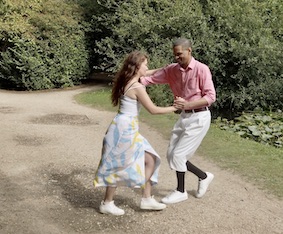
Son is a type of dance I like to call “the elegant dance of the elders”. Not that it is exclusive to old people. In fact, many young dancers practice son. It’s mainly because; that’s the kind of dance I will exclusively dance when I grow older. There is an intricacy to this dance without the vulgarity some other Latin dance display, hence the “elegant” part of it. Men tend to dance this on 2 (left foot). It includes walking part, men taking figurine postures while the lady help moves him around in a circle. The speed is generally slower than normal Cuban salsa dancing.


6.3. Chachacha
This form of dance includes extra steps into normal patterns. So instead of 6 steps on an average 8-beat count (with the 4 and 8 being a tap), you get 10 steps with chachacha. It goes like this:
■ 1-2 beats (normal): 2 steps,
■ 3-4 cha (1) cha (1) cha (1): 3
■ 5-6 beats (normal): 2
■ 7-8 cha (1) cha (1) cha (1): 3
Generally, the music is slower, allowing for many steps.
When should I start?
Although it might seem a ridiculous question for some, it can be important for others. If, as a non-practitioner, you go to a Cuban salsa dancing event, the moves will be so enticing that you will want to know how to dance. That was certainly the case for me at the beginning. However, you might try dancing with a few partners and realize they don’t want to dance with your non-existing level. Which in turn might discourage you from starting. The key to remember is that all these dancers were in your shoes at some stage. But they got over the initial fear and just dived into it. So you need to do the same and rely on a good teacher, and some time. That’s all you have to do.
Discover new, untapped materials
Learn Cuban Salsa, Bachata, Improv’ and many other dance styles. Check out these videos and see what you can achieve in less than 3 months. Private lessons available for just £35/Hour. Free body movement and basic salsa and bachata lessons provided.
